Harry Pristis
Bronze Member
Many years ago, I recovered this piece of worked bone in an area where many Paleo to Early Archaic artifacts have been found. My best guess is that it is an atlatl hook, though I am uncertain how it was hafted, even with the obvious grooves. This bone is well-mineralized, but not much degraded by stream polishing (you can still see evidence of cuts in the end-notch.) There are no apparent broken edges.
The bone is solid cortex with no evidence of the marrow cavity. Cortex that thick implies that this piece was removed from a substantial bone (including antler).
My find does not greatly resemble the obvious atlatl hook from a known Paleo site in the Aucilla River. This Aucilla hook is made of antler. My questions, then, are:
1. Is my find an atlatl hook, or is it some other sort of tool?
2. How was this bone piece hafted to an atlatl or to some other tool?
Speculation welcome!
The bone is solid cortex with no evidence of the marrow cavity. Cortex that thick implies that this piece was removed from a substantial bone (including antler).
My find does not greatly resemble the obvious atlatl hook from a known Paleo site in the Aucilla River. This Aucilla hook is made of antler. My questions, then, are:
1. Is my find an atlatl hook, or is it some other sort of tool?
2. How was this bone piece hafted to an atlatl or to some other tool?
Speculation welcome!
Upvote
0
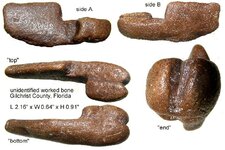
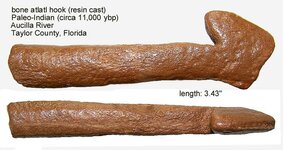




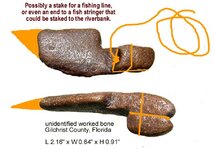
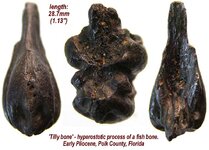
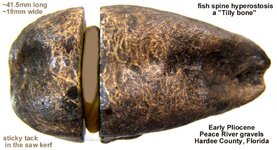
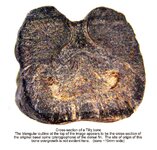
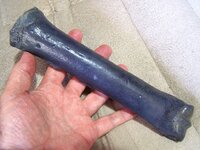
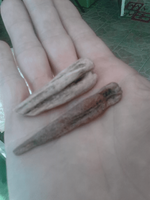



 ...but that Aucilla hook sure looks like a giant crochet hook!
...but that Aucilla hook sure looks like a giant crochet hook! 
